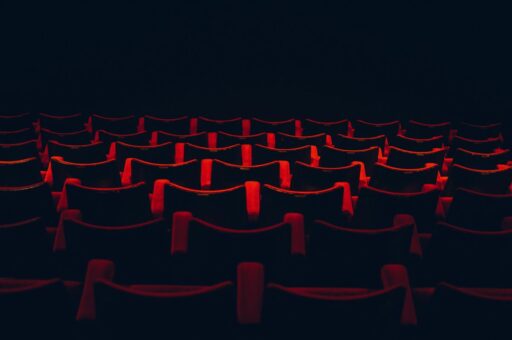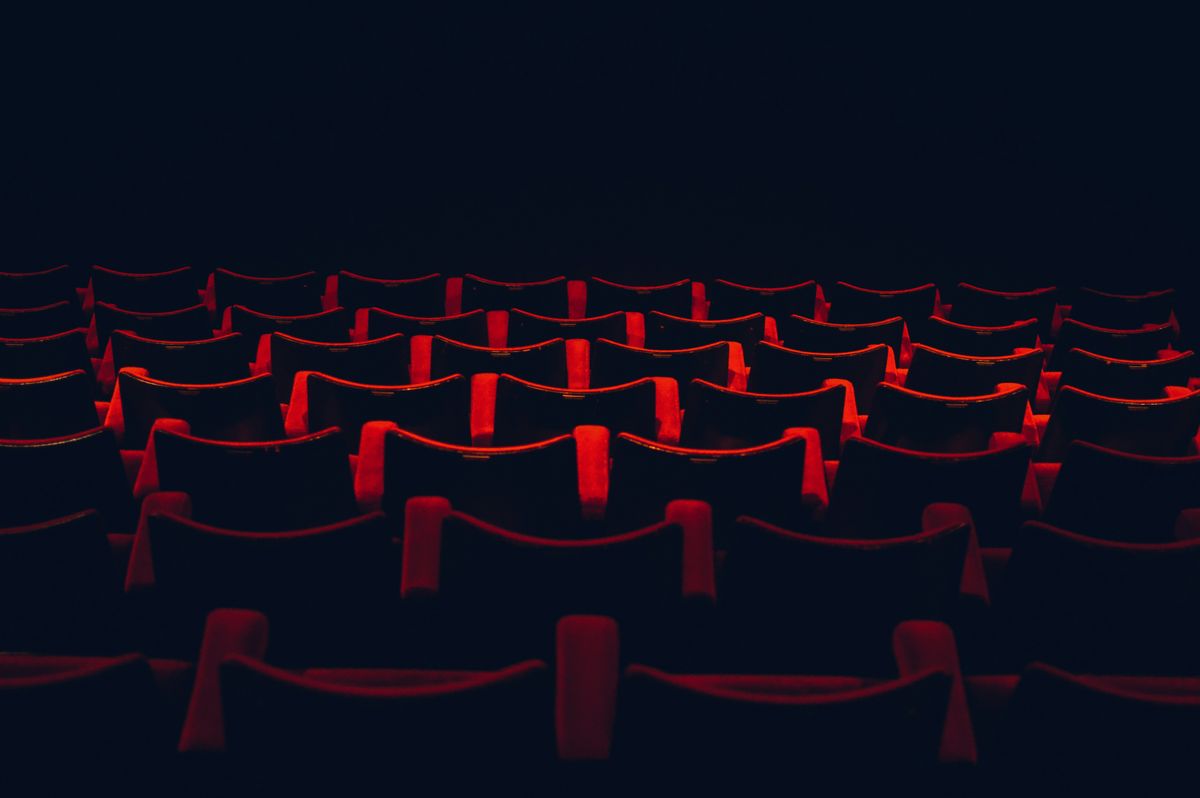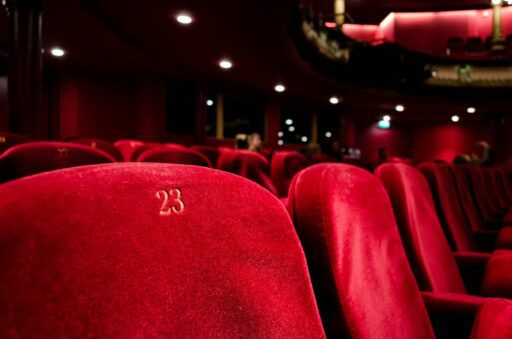The magic of cinema has captivated audiences for over a century, evolving from a simple sideshow attraction to a cornerstone of cultural life. Movie theaters have continuously transformed, embracing technological advancements and adapting to changing consumer desires. This article delves into the rich history of the movie theater experience, examining its origins, technological progress, challenges, and the balance between innovation and tradition that will shape its future.
Key Takeaways
- The movie theater experience has grown from a novel sideshow to a mainstay of entertainment, reflecting societal changes and advancements in technology.
- Architectural grandeur and technological innovations, such as the shift from film to digital projection and immersive audio systems, have redefined the cinematic experience.
- Despite the rise of home entertainment, the nostalgia and unique appeal of traditional film projection continue to draw audiences to revival houses and specialty screenings.
- Movie theaters face economic challenges and competition from home entertainment, prompting them to create unique experiences to remain relevant and attract audiences.
- The future of cinema lies in striking a balance between embracing technological change and honoring the heritage of the movie-going tradition.
The Birth and Growth of the Movie Theater

From Sideshow to Main Event: The Early Days
The transformation of cinema from a novelty act to the cornerstone of entertainment is a tale of innovation and public fascination. The early days of cinema were marked by a rapid evolution from simple moving pictures to storytelling marvels. Initially, films were short snippets, often part of a vaudeville show or a fairground attraction. As the medium grew in popularity, dedicated venues began to emerge, setting the stage for the movie theater as we know it.
The New Beverly Cinema, with its storied past, exemplifies this transition. Starting as a candy and ice cream manufacturer in the 1920s, the building later became a hotspot nightclub and eventually a movie theater. This evolution mirrors the broader shift in entertainment preferences and the growing appetite for cinematic experiences.
The allure of the silver screen turned movie-going into a cultural phenomenon, with theaters becoming hubs of social activity and artistic expression.
As theaters evolved, they began to shape not just the way stories were told, but also the communities around them. The following list highlights key milestones in the early development of movie theaters:
- Introduction of dedicated film venues
- Shift from live acts to filmed entertainment
- Creation of the first movie palaces
- The rise of community-centered cinema culture
The Rise of the Movie Palace: Architecture and Ambiance
As the 20th century dawned, the movie theater evolved from a simple venue to an elaborate ‘movie palace,’ where architecture and ambiance played pivotal roles in attracting audiences. These palaces were designed to be temples of entertainment, complete with ornate decorations, luxurious seating, and grand lobbies that promised an escape from the mundane.
- Ornate interiors with lavish decorations
- Comfortable, plush seating for an enhanced viewing experience
- Grand lobbies that served as social hubs
The movie palace became a symbol of the golden age of cinema, where the experience of going to the movies was as much about the environment as it was about the film itself. Theaters competed to offer the most opulent settings, often inspired by exotic locations and historical periods, to create a sense of wonder and anticipation before the film even began.
The grandeur of these movie palaces cultivated a sense of occasion, making each visit to the cinema a memorable event. The architecture itself was a spectacle, with many theaters boasting features such as massive chandeliers, gilded accents, and murals depicting far-off lands or scenes from classic tales.
Community and Culture: The Social Impact of Cinemas
The cinema has long been more than a place to watch films; it’s a social hub that brings people together. Filmgoing is a social experience that requires social responsibility to maintain, as it fosters a sense of community and shared experience. The in-theater interviews with patrons reveal not just excitement for the films, but also the significance of the cinema to their community.
- The communal feeling of watching a movie with an audience is irreplaceable.
- Cinemas act as cultural landmarks, often becoming integral parts of local communities.
- The loss of a local cinema can signify a profound loss to the community’s social fabric.
In the face of technological advancements, the essence of moviegoing remains rooted in its ability to connect us. The digital age has reshaped entertainment, but the collective experience of cinema endures.
Furthermore, the role of cinemas extends beyond entertainment; they are places where memories are made and traditions are passed down. The importance of preserving this communal moviegoing experience for future generations cannot be overstated.
Technological Innovations in Cinematic Presentation

The Shift from Film to Digital Projection
The transition from traditional film to digital projection has marked a significant milestone in the evolution of cinema. This shift has not only enhanced the image quality and consistency of movie screenings but has also revolutionized the way films are produced and distributed. Digital projection offers a myriad of benefits over its analog predecessor, including ease of distribution, reduced costs for theater owners, and the ability to easily integrate advanced technologies such as 3D.
With the advent of digital projection, the role of the projectionist has evolved. The meticulous process of checking film reels and marking changeover cues has been replaced by digital systems that require less manual intervention. However, this has also sparked a debate about the loss of the traditional projectionist’s craft.
The digital age has streamlined the filmmaking process, making it more accessible and efficient. It has democratized the art of filmmaking, allowing more voices to be heard.
Despite the benefits, some purists argue that something intangible is lost with the disappearance of film projection. The unique texture and warmth of film, the anticipation of a reel change, and the skill of the projectionist are cherished aspects of the traditional movie-going experience that digital projection cannot replicate.
Immersive Audio: From Mono to Dolby Atmos
Until the mid-1970s, the movie theater experience was often accompanied by mono sound, which limited the audio dimension of films to a single channel. The introduction of Dolby Stereo in 1975 marked a significant leap forward, enhancing the auditory experience with multiple channels of sound. This technology had its real breakthrough with the release of iconic films that showcased its capabilities, creating a more dynamic and engaging soundscape for audiences.
The evolution of audio technology in cinemas has not only improved the quality of sound but also the way we perceive and experience movies. With the advent of systems like Dolby Atmos, sound has become an immersive tool that envelops the viewer, adding depth and realism to the cinematic experience.
The progression from mono to stereo and eventually to Dolby Atmos can be summarized in the following points:
- Mono sound provided a single audio source, often resulting in a flat sound experience.
- Stereo sound introduced multiple channels, allowing for a sense of directionality and space.
- Dolby Stereo brought further sophistication with noise reduction and improved dynamic range.
- Dolby Digital added discrete channels for surround sound, enhancing the clarity and detail of movie audio.
- Dolby Atmos represents the pinnacle of immersive audio, with the ability to place and move sounds anywhere in the theater, including overhead, for a truly three-dimensional experience.
The Role of Virtual Reality in Modern Cinemas
Virtual reality (VR) represents the latest frontier in multimedia entertainment, offering a level of interactivity and immersion that was once unimaginable. They are designed to immerse the audience in a multi-sensory experience, enhancing the realism and emotional impact of the content they are engaging with. This holistic approach to immersive storytelling allows viewers to step into the shoes of characters and explore virtual environments, effectively blurring the lines between cinema and interactive entertainment.
As technology continues to evolve, VR in cinemas is not just about watching films; it’s about experiencing them in a completely new dimension.
While VR offers a unique and immersive experience, it is not positioned to replace traditional cinema entirely. Both mediums provide distinct experiences, with traditional cinema continuing to thrive alongside VR. The potential of VR in revolutionizing storytelling and audience engagement is significant, as it opens up new possibilities for filmmakers to craft narratives.
- Gaming: A New Dimension of Entertainment
- FAQs: Addressing Common Questions about VR
The future of filmmaking is undoubtedly being shaped by VR technology, offering new possibilities for storytelling and audience engagement.
The Nostalgic Charm of Traditional Film Projection

The Art of Film Projection: A Dying Craft?
The meticulous process of film projection is a craft that has been refined over the course of cinema’s history. Unlike the simplicity of digital ‘press play’, projecting film requires a hands-on approach that is both an art and a science. Before the lights dim and the audience settles, the projectionist performs a ritual unseen by most; inspecting the film for imperfections, measuring the reel, and marking changeover cues for seamless transitions between reels.
The debate over the relevance of traditional film projection in a digital age is ongoing. Advocates for film argue that the warmth, grain, and vibrancy of a film print create a unique cinematic experience that digital formats cannot replicate. This is especially true for revival houses that specialize in screening rare and specialty prints, offering an experience steeped in nostalgia and authenticity.
| Film Format | Image Quality |
|---|---|
| 16mm | Standard |
| 35mm | High |
| 70mm | Very High |
The charm of traditional film projection lies not only in the visual and auditory experience but also in the dedication and expertise of the projectionists who bring these classic films to life.
Despite the challenges posed by new technologies and the convenience of home viewing, there remains a passionate community committed to preserving the art of film projection. It is a testament to the enduring appeal of watching movies on film, an experience that continues to draw audiences seeking something special beyond the mainstream.
Revival Houses and the Preservation of Film Culture
Revival movie theaters, often referred to as ‘revival houses’, have become sanctuaries for film enthusiasts seeking the authentic experience of watching movies on film. The New Beverly Cinema stands as a testament to the enduring charm of film projection, with its unwavering commitment to screening movies exclusively on film. The tactile warmth and grain of the image, the vivid colors, and the richness of sound are all elements that contribute to the unique appeal of film that digital formats have yet to replicate.
At these venues, the projection booth is not just a technical space but the heart of the cinematic experience. The New Beverly, for instance, prides itself on showcasing specialty and rare prints, offering audiences a chance to witness cinematic history in its original form. The effort to maintain and project these films is considerable, but it transforms a simple movie screening into an event, imbuing it with a sense of occasion and nostalgia.
The dedication of revival houses to film culture goes beyond mere preservation; it is about keeping a tradition alive, ensuring that the tactile and visual pleasure of film remains accessible to new generations of moviegoers.
While the debate between film and digital continues, the role of revival houses in preserving film culture is undeniable. They serve as cultural landmarks, connecting the past and present of cinema, and offering a space where the magic of traditional film projection is celebrated.
The Unique Appeal of Watching Movies on Film
In an era where digital dominates, the allure of watching movies on film remains undiminished for many cinephiles. The tactile grain, the flicker of light, and the rich colors of film prints create a sensory experience that digital formats struggle to replicate. This unique appeal is not just about nostalgia; it’s about preserving a form of artistry that is integral to the history of cinema.
- The warmth and grain of film projection
- The rarity and specialty of certain film prints
- The communal experience of watching with an audience
For enthusiasts, the process of projecting film is an art in itself, one that requires skill and dedication. It’s a labor of love that turns a simple screening into an event, making each viewing a special occasion. The New Beverly Cinema, a revival house known for its commitment to film, showcases this dedication by offering a diverse collection, from classic features to rare prints, ensuring there’s something for everyone.
The magic of cinema is not just in the stories it tells, but in the medium through which they are conveyed. Film projection is a craft that champions the beauty of imperfection, the anticipation of the reel change, and the shared experience that comes from a collective viewing.
While the debate between film and digital continues, the importance of film cannot be overstated. It’s a medium that captures the essence of cinema, from the vivid colors and sound to the very width of the film strip that determines the image quality. The New Beverly’s dedication to always screening on film is a testament to the enduring charm of this classic format.
The Modern Movie-Going Experience: Challenges and Changes

The Competition with Home Entertainment Systems
The allure of the big screen has long been a draw for movie enthusiasts, but the rise of sophisticated home entertainment systems has presented a formidable challenge to traditional movie theaters. The convenience and comfort of watching films from one’s own couch, coupled with the technological advancements in home audio and visual equipment, have significantly altered the movie-going landscape.
- Enhanced picture quality with 4K and 8K resolutions
- Surround sound systems that rival theater acoustics
- Streaming services offering extensive libraries of films and shows
- The appeal of on-demand content without the need for travel or scheduling
The modern home theater experience has not only matched but in some aspects, surpassed the traditional cinema in terms of accessibility and personalization.
Despite these challenges, movie theaters continue to innovate, seeking ways to provide unique experiences that cannot be replicated at home. This includes offering exclusive content, advanced screening technologies, and interactive events to draw audiences back to the magic of the movie theater.
The Economics of Movie Theaters: Pricing and Accessibility
The economics of movie theaters are complex and multifaceted, often balancing a fine line between affordability and profitability. Ticket sales are not the primary revenue source for most cinemas; concessions play a significant role in their financial ecosystem. The pricing strategy for tickets and snacks can greatly influence a theater’s accessibility and overall success.
- Ticket Pricing: Varies widely, with some theaters offering discounts for children, matinees, or special events.
- Concessions: Often marked up significantly, these are crucial for a theater’s bottom line.
- Accessibility: Theaters must balance pricing to remain accessible to a broad audience while covering costs.
Theaters operate on thin margins and are driven by a passion for the cinematic arts rather than a pursuit of wealth. The challenge lies in creating an experience that justifies the expense for moviegoers, especially when home entertainment options are increasingly compelling.
The struggle for theaters to remain economically viable while providing an accessible experience to the community is ongoing. Innovative pricing models, loyalty programs, and special screenings are some of the strategies employed to attract and retain audiences.
Creating Unique Experiences to Attract Audiences
In the competitive landscape of entertainment, movie theaters must innovate to remain relevant. The key to longevity lies in offering unique experiences that cannot be replicated at home. This involves leveraging technology to enhance the sensory experience of movie-goers, from the visuals to the acoustics.
- Immersive environments: Theaters are transforming traditional viewing spaces into thematic havens that complement the movie’s genre, providing a holistic experience.
- Interactive features: Incorporating elements such as audience participation or live performances can make a screening memorable.
- Exclusive content: Offering behind-the-scenes footage or interviews with the cast and crew can entice cinephiles.
The goal is to create an environment that excites and engages the audience beyond the film itself.
Theaters are also adopting innovative marketing strategies to keep audiences coming back. A notable example is Filmgrail’s approach to advertise upcoming films and events, which encourages movie-goers to plan their next visit. The integration of technology in theater design and marketing is not just about keeping up with trends; it’s about creating a community around the cinema experience.
The Future of Cinema: Embracing Change While Honoring Tradition

Balancing Innovation with Cinematic Heritage
As the film industry continues to evolve, a delicate balance must be struck between embracing cutting-edge technology and preserving the rich heritage of cinema. The challenge lies in integrating modern advancements while maintaining the essence that makes movie-going a unique experience.
- The preservation of traditional film projection techniques, despite being less efficient than digital, offers a warmth and authenticity that digital formats struggle to replicate.
- Cinemas that showcase classic films provide a historical context and cultural continuity that enrich the viewing experience.
- The incorporation of new technologies, such as advanced sound systems and virtual reality, must complement rather than overshadow the storytelling.
The true magic of cinema lies not just in the stories told, but in how they are presented to the audience. It is the responsibility of theaters to curate an experience that honors the past while looking forward to the future.
Theaters are thus faced with the task of curating a selection of films and presentation methods that appeal to both the traditionalist and the technophile. This requires a nuanced understanding of audience preferences and a commitment to offering a diverse range of cinematic experiences.
Supporting Independent Theaters and Projectionists
In the age where digital dominates, the charm of traditional film projection is a rare commodity that independent theaters and projectionists strive to preserve. These venues offer a unique experience that stands in contrast to the multiplexes, showcasing the artistry and tactile quality of film that enthusiasts and new audiences alike can appreciate.
- Independent theaters often feature specialty and rare prints, providing a visual and auditory experience that is distinct from digital projection.
- Projectionists like those at the New Beverly Cinema are custodians of this craft, ensuring that the warmth and grain of film projection continue to enchant viewers.
The dedication to film projection is not just about nostalgia; it’s about creating a special event. A screening of an old print becomes an occasion, transforming the simple act of watching a movie into something memorable. As one projectionist puts it, it’s important to be screening the prints, not just preserving them.
The survival of independent theaters is crucial for maintaining the diversity of the movie-going experience. Their ability to bounce back after setbacks, such as the pandemic, and attract new generations of moviegoers is a testament to the enduring appeal of film.
Anticipating the Next Evolution in Movie-Going
As the curtain falls on the current era of cinema, we stand at the precipice of a new chapter in the movie-going experience. The industry buzz suggests a shift towards more personalized and technologically advanced forms of entertainment. Here are some anticipated trends:
- Rise of Premium Cinema Experiences: Luxurious seating, gourmet dining options, and personalized service are becoming the gold standard for premium cinemas.
- Embracing Virtual and Augmented Reality: The lines between film and interactive experiences are blurring, with VR and AR offering new dimensions of immersion.
- Adoption of Sustainable Practices: Eco-friendly initiatives are gaining traction, aiming to reduce the carbon footprint of theaters.
- Hybrid Models and Streaming: The integration of streaming services with traditional cinema viewing is crafting a hybrid future.
The evolution of cinema is not just about technology; it’s about creating a space where every visit is an event, a memory, and a step into another world.
The challenge for theaters will be to balance these innovations while maintaining the magic that has captivated audiences for over a century. As we look to the horizon, it’s clear that the movie theater of tomorrow will be a place of convergence—where nostalgia meets novelty, and tradition embraces transformation.
Embracing the Future of Cinematic Experience
As we reflect on the transformative journey of movie theaters, from their inception as a novel sideshow to becoming cultural cornerstones of society, it is evident that the magic of cinema continues to evolve. The relentless march of technology has not only enhanced the quality and immersion of the cinematic experience but also challenged traditional paradigms, giving rise to new forms of storytelling and audience engagement. While the allure of home entertainment systems and the convenience of digital streaming pose significant competition, the unique charm and communal spirit of the movie theater endure. As we stand at the crossroads of tradition and innovation, it is crucial to support and preserve the enchanting escapades that only a theater can offer, ensuring that future generations can partake in the timeless ritual of collective imagination. The cinema, with its screen as a portal to infinite worlds, remains an irreplaceable testament to human creativity and the shared desire for wonder.
Frequently Asked Questions
How did the movie theater evolve from a sideshow to a main event?
The movie theater evolved from a sideshow to a main event with the advent of dedicated cinema buildings. These structures were designed solely for the purpose of showcasing films, allowing audiences to immerse themselves in various narratives and genres in a comfortable and communal setting.
What impact has digital projection had on the moviegoing experience?
Digital projection has significantly improved the moviegoing experience by providing higher image quality and consistency across screenings. It has replaced traditional film projectors and has become the standard due to its reliability and ease of use.
How has immersive audio technology like Dolby Atmos changed cinema?
Immersive audio technologies such as Dolby Atmos have revolutionized cinema by creating a more enveloping auditory experience. They allow sound to move around the theater in three-dimensional space, which draws audiences deeper into the world of the film.
Why is there a nostalgic appeal to watching movies on traditional film?
Watching movies on traditional film has a nostalgic appeal because it offers a unique and authentic experience that cannot be replicated by digital formats. The texture and warmth of film projection, along with the effort involved in screening classic prints, make it a special event for cinephiles.
What challenges do modern movie theaters face with the rise of home entertainment?
Modern movie theaters face the challenge of competing with home entertainment systems, which offer convenience and accessibility. With the cost of creating a home theater setup becoming more affordable, cinemas need to find unique ways to attract audiences and provide experiences that cannot be replicated at home.
What can be done to ensure the preservation of traditional film projection and independent theaters?
To ensure the preservation of traditional film projection and independent theaters, it is important to support these venues by attending screenings and events. Additionally, initiatives to educate the public about the value of film culture and the art of projection can help maintain interest and appreciation for this cinematic heritage.






